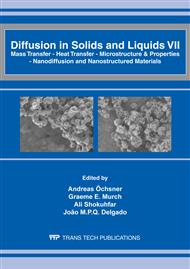p.674
p.682
p.690
p.696
p.702
p.708
p.713
p.719
p.725
Oxygen Diffusion in Ti-20Mo Alloys, Used as Biomaterial, Measured by Mechanical Spectroscopy
Abstract:
Titanium alloys are favorable implant materials for orthopedic applications, due to their desirable properties such as good corrosion resistance, low elasticity modulus, and excellent biocompatibility. The research on titanium alloys is concentrated in the β type, as the Ti-20Mo alloys and the addition of interstitial elements in these metals cause changes in their mechanical properties. The mechanical spectroscopy measurements have been frequently used in order to verify the behavior of these interstitials atoms in metallic alloys. This paper presents the study of oxygen diffusion in Ti-20Mo alloys using mechanical spectroscopy measurements. A thermally activated relaxation structure was observed in the sample after oxygen doping. It was associated with the interstitial diffusion of oxygen atoms in a solid solution in the alloy. The diffusion coefficient for the oxygen diffusion in the alloy was obtained by the frequency dependence of the peak temperature and by using a simple mathematical treatment of the relaxation structure and the Arrhenius law.
Info:
Periodical:
Pages:
702-707
Citation:
Online since:
April 2012
Keywords:
Price:
Сopyright:
© 2012 Trans Tech Publications Ltd. All Rights Reserved
Share:
Citation:


